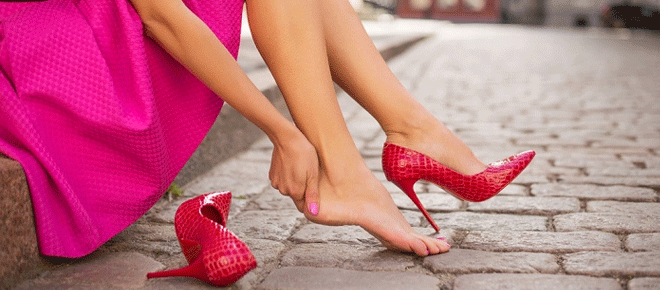
The right shoes can keep your feet healthy and protect your body from injury. But finding the right shoe can be difficult.
It’s important to understand your foot type so you can choose the best shoes for your gait. This will help prevent injuries and promote your performance.
Flat Feet
Whether you have anatomically flat feet or collapsed arches due to muscle weakness, your footwear choices can make a big difference. Having your feet examined by a podiatrist can help you determine which shoes are best for your foot condition, based on your specific needs and lifestyle.
Your doctor will examine your feet, look for signs and symptoms of a flat foot, and take X-rays if needed. They may also prescribe an orthotic device that will fit your foot to keep it in a proper position.
The most important feature to consider when choosing shoes for flat feet is cushioning. This will absorb the shock that is felt while walking, running, or jumping. Having cushioned insoles can alleviate foot pain and reduce the risk of twisting your ankles or hurting your knees and hips.
In addition, the arch of your foot is a natural spring that helps distribute weight evenly throughout your feet and legs. Without that spring, you may experience uneven distribution of body weight and pain in the ankles, calves, hips, knees, and lower back.
If you have a flat foot, your doctor may prescribe a shoe that provides adequate arch support and cushioning. Some flat-footed runners and people who are overweight may need a custom-made orthotic to provide extra support.
Another option is a shoe that has a raised arch to relieve pressure on the archless part of your foot. This can be a good choice if you have flat feet but are still looking for a shoe that looks fashionable.
You can find shoes that provide this kind of support at many retailers, including our Zone. These leather strap sandals have a toe-loop design that allows you to adjust the strap for the perfect fit and a slightly half-inch heel that can work to take some of the pressure off your midsole area.
High Arches:
High arches, or cavus feet, are a common foot type that can cause foot pain and other injuries. They can also make it difficult for you to walk and run, so it’s important to choose the right shoes to keep your feet healthy and injury-free.
The best running shoes for high arches feature a cushioned sole and soft insole that absorbs shock when you run or walk. In addition to offering good support, they should also have a wide toe box to allow your feet to move freely.
While many people are born with high arches, they can develop over time as a result of a medical condition or neurological disorder, such as cerebral palsy, polio, muscular dystrophy, or stroke. These conditions may also cause a foot that is too rigid, which can lead to overuse injuries like plantar fasciitis and shin splints.
As a rule, walking or running shoes that are designed for flat feet aren’t suitable for those with high arches, since they won’t provide the necessary arch support. In contrast, shoes with a supportive midsole can provide the support that your foot needs, while also helping to prevent sprains and injuries in other parts of your foot.
When it comes to high-heeled shoes, the most important thing is to avoid shoes with a tight heel counter, which can be a problem for people with high arches because it can push the arch of the foot outwards. Instead, try to find shoes with a heel that is at least 2.5 inches.
That has a deep, wide-toe box. This helps to enclose your toes and can help reduce pain from hammertoes, which are often a symptom of high arches.
In terms of running shoes, the best ones for high arches tend to be lightweight, so you can run longer distances without feeling like you’re lugging your weight around with every step. Plus, they’re built with a sock liner that molds to the shape of your foot for added comfort and support.
Another great option for high arches is the Brooks Ghost 14. This runner-favorite has a cushy feel that runners love, and now it has 100% DNA LOFT foam in its midsole to absorb shock even further. Its updated midsole also features a 12mm offset, which can help reduce Achilles inflammation.


Comment
leave comment